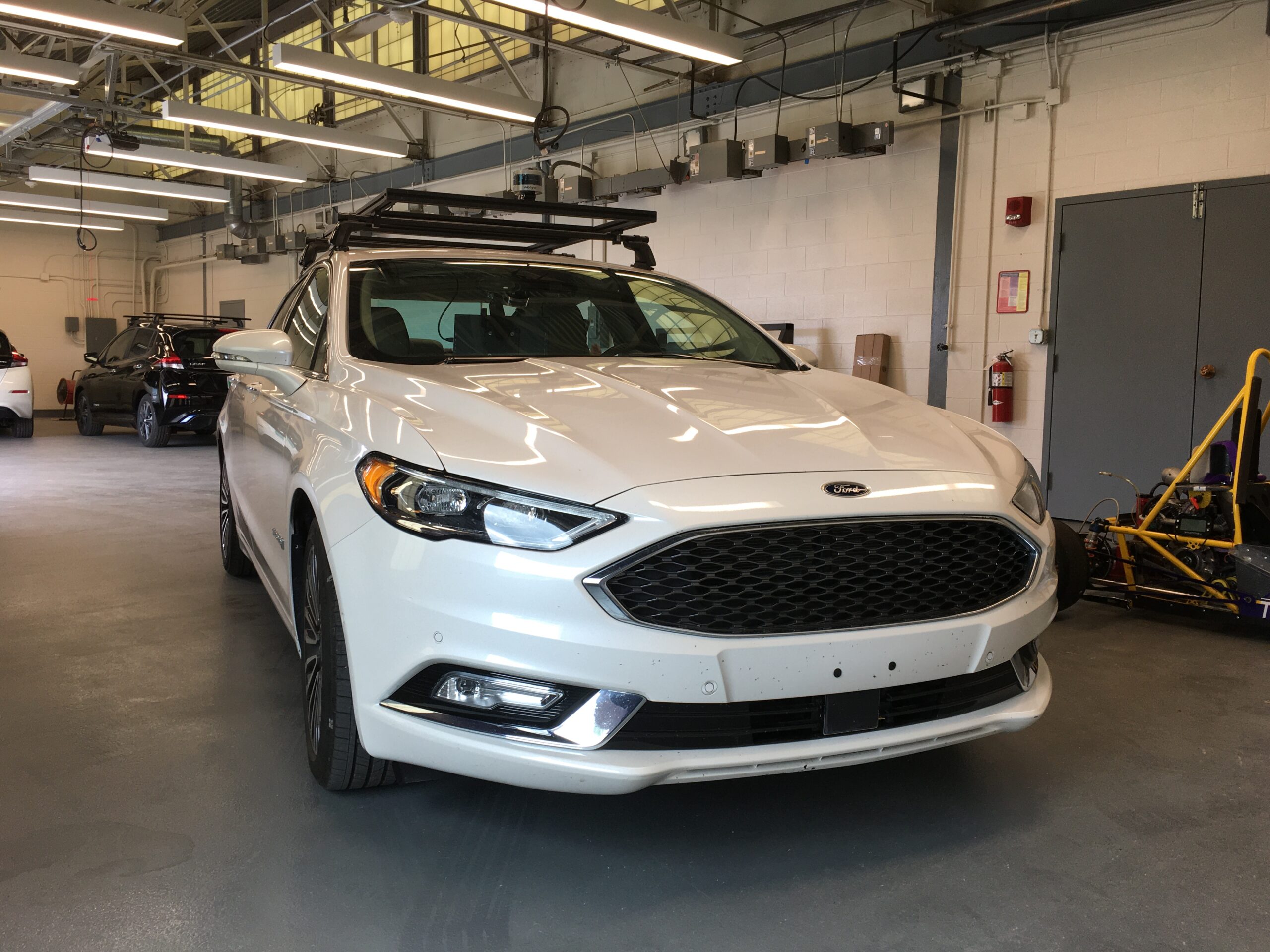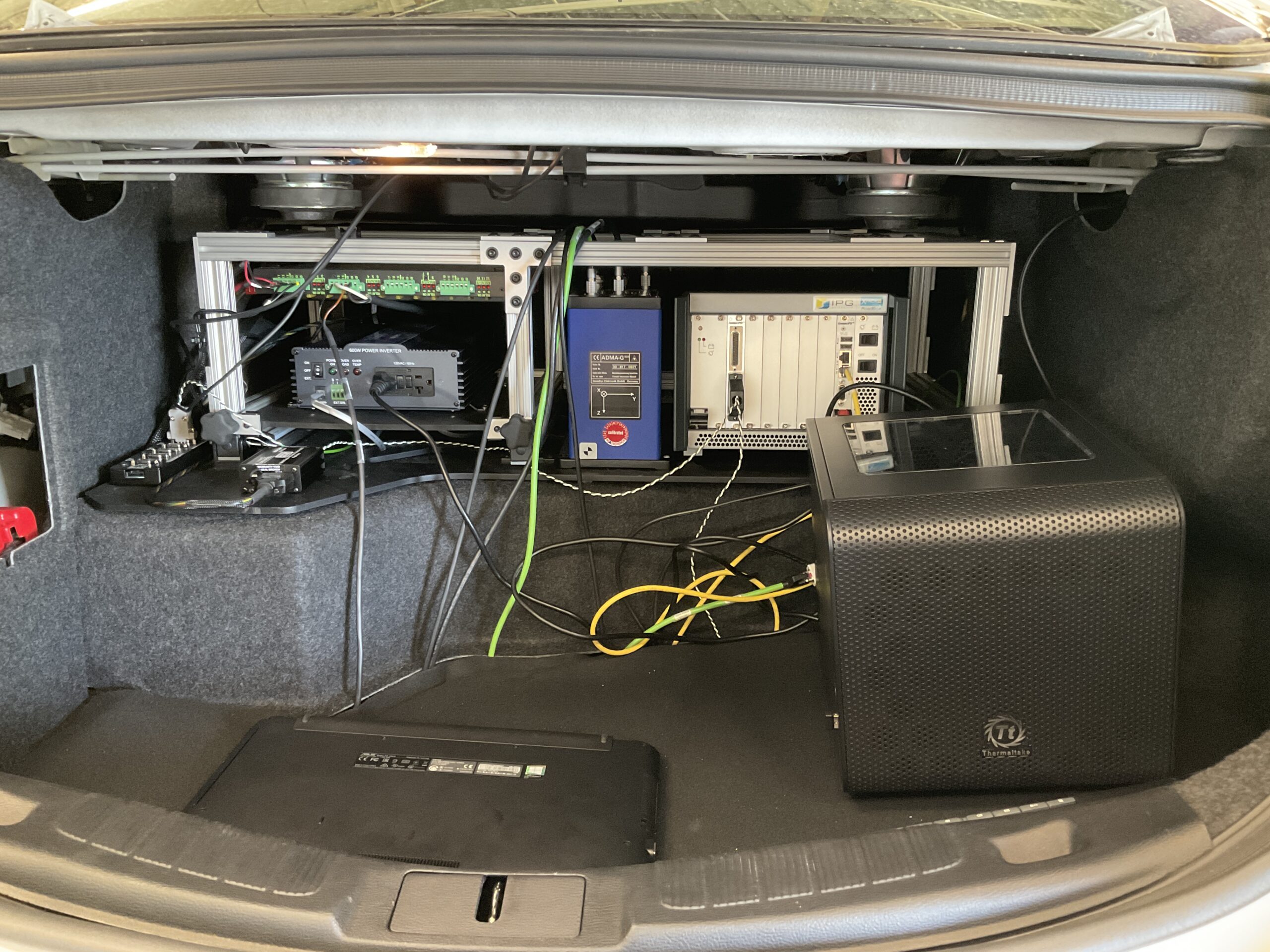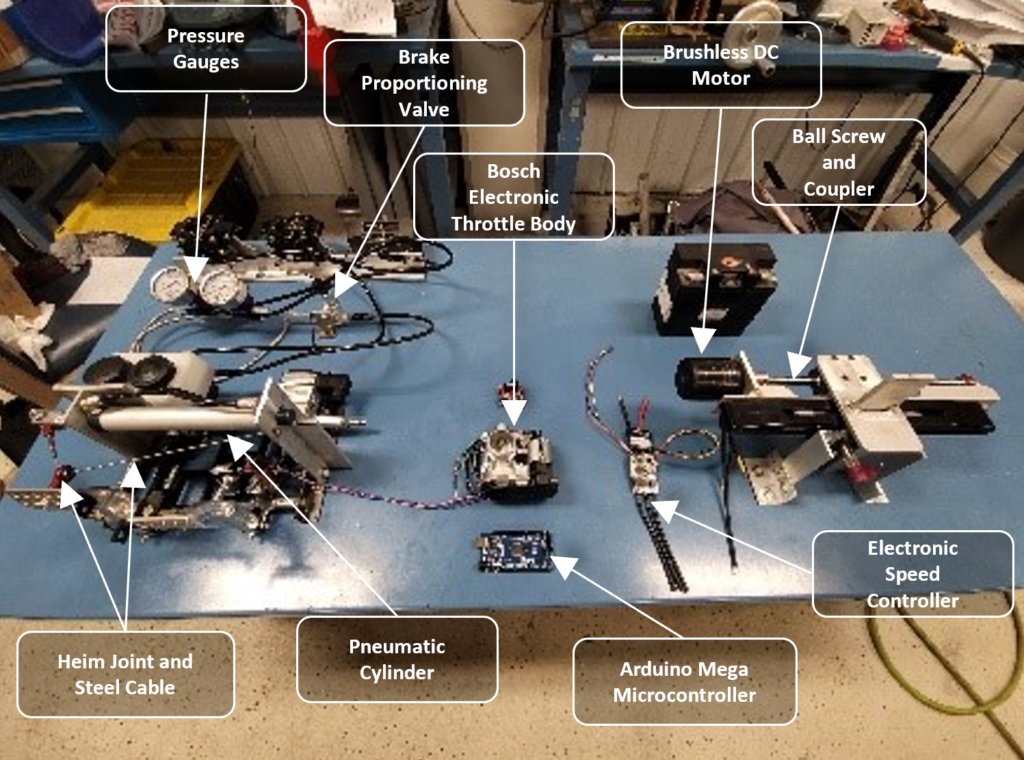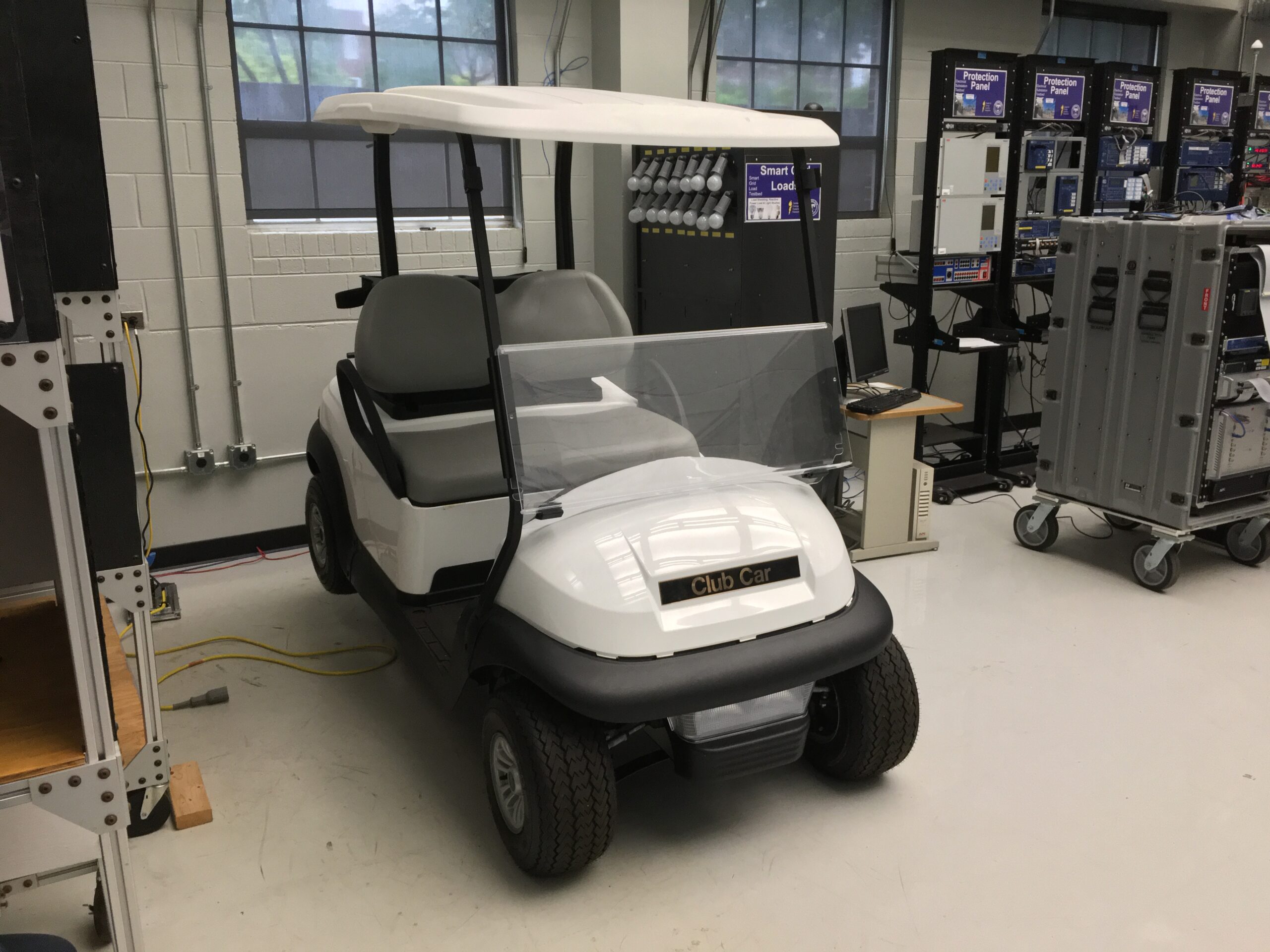Connected and Autonomous Vehicle
To enable our work in connected and autonomous vehicle (CAV) testing and verification, we recently implemented a state-of-the-art research vehicle. The rough estimate of this research vehicle is near $200K. The research vehicle will be used for developing a generalized CAV testing platform capable of verifying the readiness of a CAV in terms of safety and security. This will be performed by inserting a real-world CAV into a simulated environment where it is subjected to a dynamic testing scenario. This scenario dynamically changes and evolves, in real-time, in response to the performance of the CAV under testing. As the CAV fails in a certain metric (i.e., identifying a pedestrian), the scenario will “tailor” itself to target the weaknesses exhibited by the CAV. The aim of this is to develop a general testing framework that can be applied to any CAV, such that the readiness of the system can be determined and improved control algorithms, capable of mitigating CAV errors, can be developed.
Digital Twin and Mixed Reality Platform
The platform’s foundation is a Ford Fusion Hybrid, coming equipped from the factory with 360 ultrasonic proximity sensing, a rear-facing camera, and front-facing radar. Thanks to services provided by AutonomouStuff, the Fusion has been further equipped with a VLP-16 LiDAR from Velodyne, front-facing Aptiv ESR 2.5 radar, GeneSys ADMA-G-ECO GPS/IMU, Spectra GPU, and an IPG Roadbox HiL running the CarMaker simulation software. Additionally, a DataSpeed drive-by-wire module was integrated to allow for CAN messages and commands to be sent directly to the vehicle’s control system, by-passing the manual controls. This allows for the vehicle to be controlled from external, third-party peripherals and lays the foundation for which to add full vehicle autonomy through the integration of additional cameras, sensors, and hardware for perception and decision-making.
Autonomous Racing Vehicle
Tennessee technological university is home to a FSAE chapter. Annually, the team designs and builds a conventional racing vehicle. Using the foundation of a previously completed race car, our research team has a dedicated racing vehicle and collaborates with the FSAE chapter to integrate perception and decision making to create an autonomous racing platform for use in autonomous motorsports. Our efforts in the area of autonomous racing are the first at our university. To accomplish the task of designing an autonomous racing vehicle, several key integrations must be completed. The first of these is an actuation system capable of being automated and controlled by the perception and decision-making system. As this is planned to be used in motorsports, it is important to keep in mind performance in terms of racing performance, namely any additional weight added to the platform. Next is the integration of sensors and cameras capable of capturing the world around our vehicle. These data streams must then be processed by a perception and decision-making unit. This portion of the platform is responsible for perceiving the world around our vehicle and deciding the best course of action to take. In terms of racing, the algorithms that in control of the vehicle must consider different factors than an autonomous vehicle operating in a real-world setting, such as pedestrians.
Drive by Wire Table for Vehicle with a Combustion Engine
Over the course of the last year, our collaboration with the FSAE chapter has resulted in a research testbench for developing the automated actuation system for controlling our racing platform. When developing the platform, there were several constraints to contend with. The first of these was developing a system that retained manual control such that the vehicle could be piloted by a human. Next was the space available within the vehicle cockpit where this system would be installed into. Last, and not least, is enabling the integration of safety overrides and fail-safes.
The system controls throttle input using a Bosch electric throttle body that will be mounted to the engine in place of the current, mechanical unit. To retain manual control, a potentiometer was integrated into the throttle pedal, allowing for manual actuation like that of conventional vehicles with drive by wire systems.
Braking is controlled by a pneumatic cylinder mounted behind the brake pedal, perpendicular to the system. When extended, the cylinder depresses the brake pedal using a steel cable under tension. Due to the placement of the cylinder and the cable derived actuation, it is possible to manually depress the brake pedal.
Steering the vehicle is made possible through the integration of a brushless DC motor that drives a ball screw. The system functions by rotating the screw to push or pull the steering rack of our vehicle. Similar to the throttle pedal, a potentiometer is integrated into the steering wheel, allowing for manual control of the vehicle. For controlling the vehicle, as a whole, we are to integrate an NVIDIA Jetson TX2 module. The TX2 is capable of processing camera and sensor data, enabling perception and decision making. Based on what the module perceives about the world around it, it then will send commands to the vehicle subsystems to carry out the best course of action.
Autonomous Golf Cart
At Tennessee Technological University, we are partnered with the Center for Energy Systems Research (CESR) and seeking to develop an autonomous golf cart capable of wireless charging. This project is a continuation of our earlier work at Florida Polytechnic University.
To control the golf cart, we have designed and are in the process of integrating a fully electronic actuation system that retains the ability to be manually driven. To manipulate the braking system, a linear actuator is responsible for pulling the steel cable attached to the master cylinder. Manual braking is retained as a pilot can depress the brake pedal. Using a digital to analog converter, a voltage between 0 and 5 is sent directly to the motor controller. Due to this, a human pilot can still control the throttle pedal as if no changes were made. For steering the golf cart, a NEMA 42 stepper will be coupled to the steering column via timing belt and pulleys. Manual control is retained as the stepper motor is free-spinning when unpowered. Using a Speedgoat baseline real-time target machine and Simulink, a control algorithm will be implemented to control the actuation system and, in turn, drive the golf cart.
Vehicle Simulator
In partnership with the mechatronics lab, we have access to a vehicle simulated to test different control algorithms. We use the vehicle simulator for teaching concepts in automatic control and introduction to automotive engineering. We also use it for research projects related to the human perception of autonomous vehicles.






